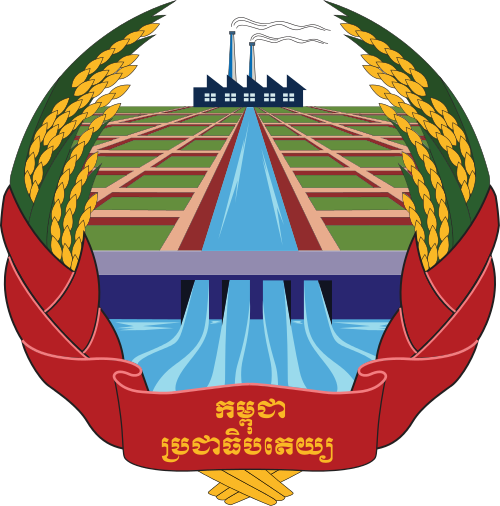The government of Democratic Kampuchea, which existed from 1975 to 1979, was led by the Khmer Rouge, a radical communist movement under the leadership of Pol Pot. This period was marked by profound transformations within Cambodian society, aimed at creating a new social order based on communist principles. This article delves into the structure and functioning of the government, highlighting both its operational mechanisms and the consequences of its policies.
Overview of the Government Structure
The government of Democratic Kampuchea was characterized by a highly centralized and authoritarian structure. The Khmer Rouge, officially known as the Communist Party of Kampuchea (CPK), exercised absolute control over all aspects of life in Cambodia.
Leadership
At the helm was Pol Pot, the General Secretary of the CPK, who effectively became the country’s leader. The leadership structure included several key figures, such as:
- Nuon Chea: Also known as “Brother Number Two,” he was the Deputy Prime Minister and played a crucial role in shaping policies.
- Ieng Sary: The Minister of Foreign Affairs, responsible for international relations and diplomacy.
- Khieu Samphan: The nominal head of state, serving as the figurehead for the regime.
Administrative Organization
The Khmer Rouge established a hierarchical government structure, with authority flowing from the top down. This structure included:
- Central Committee: The highest decision-making body of the CPK, consisting of senior party leaders who determined policies.
- Provincial and District Committees: These bodies were responsible for implementing central policies at local levels. Each province was overseen by a governor who reported directly to the central government.
- People’s Revolutionary Tribunals: Established to conduct trials against perceived enemies of the state, reflecting the regime’s approach to dissent and opposition.
Ideological Foundations
The government was guided by a radical communist ideology that sought to eradicate all remnants of capitalism and Western influence. The Khmer Rouge believed in the necessity of achieving a classless society through violent revolution, which necessitated the complete restructuring of Cambodian society.
Policies and Governance
The policies implemented during the Democratic Kampuchea regime were characterized by extreme measures aimed at achieving their ideological goals. The government aimed for self-sufficiency, collectivization of agriculture, and the eradication of any perceived threats to their authority.
Agricultural Collectivization
One of the regime’s most significant policies was agricultural collectivization, which sought to consolidate individual landholdings into collective farms. This process was marked by:
- Evacuation of Cities: In April 1975, the Khmer Rouge ordered the evacuation of Phnom Penh and other urban areas, forcing millions into the countryside. The government viewed urban populations as potential dissenters and sought to create a new agrarian society.
- Cooperative Farms: Land was redistributed to create cooperative farms, where peasants worked collectively. The government imposed strict quotas on production, often leading to severe food shortages due to unrealistic expectations.
Economic Policies
In addition to agricultural collectivization, the government aimed to transform Cambodia into an industrialized nation. Key initiatives included:
- Self-Sufficiency: The Khmer Rouge sought to eliminate dependence on foreign imports and achieve complete self-sufficiency in food and industrial goods. This involved prioritizing domestic production over international trade.
- Forced Labor: The regime employed forced labor to meet production quotas, leading to widespread human rights abuses. Labor camps were established to extract work from perceived enemies and dissidents.
Education and Propaganda
The Khmer Rouge placed significant emphasis on education and propaganda to instill their ideology among the population:
- Re-education: Schools were restructured to reflect revolutionary ideals, promoting Marxist-Leninist principles. The regime targeted educated individuals, viewing them as potential threats.
- Censorship and Propaganda: The government controlled all media and information, disseminating propaganda to promote the regime’s achievements while suppressing dissent. Criticism of the government was met with severe punishment.
Timeline of Key Events
1975
- April 17: The Khmer Rouge captures Phnom Penh, marking the beginning of the Democratic Kampuchea era. The evacuation of cities begins immediately, and the regime implements its radical policies.
- June: The government begins implementing policies of agricultural collectivization, forcibly relocating people to rural areas.
1976
- January: The Khmer Rouge officially adopts a new constitution that emphasizes the principles of communism and collectivization.
- April: The regime celebrates its first anniversary, showcasing its achievements in agriculture and self-sufficiency.
1977
- Continued Collectivization: The Khmer Rouge intensifies its collectivization efforts, leading to severe famine and widespread suffering. The regime continues to enforce strict quotas.
- Suppression of Dissent: As the regime faces increasing dissatisfaction, it ramps up its campaign against perceived enemies. Thousands are arrested, tortured, or executed as the government attempts to eliminate any opposition.
1978
- Vietnamese Invasion: Tensions escalate between Cambodia and Vietnam due to border conflicts. The Khmer Rouge’s aggressive policies contribute to a deteriorating relationship.
- Continued Repression: The regime intensifies its crackdown on dissent, leading to the establishment of more prisons and execution sites.
1979
- January 7: The Vietnamese military invades Cambodia, leading to the fall of the Khmer Rouge regime. The collapse of the Democratic Kampuchea government marks the end of its brutal reign and the beginning of a new chapter in Cambodian history.
Aftermath and Legacy
The fall of the Khmer Rouge left a deep and lasting impact on Cambodia. The policies of the Democratic Kampuchea government resulted in the deaths of an estimated 1.7 million people, approximately a quarter of the population, due to famine, forced labor, and executions.
Humanitarian Crisis
The humanitarian crisis that ensued left Cambodia in ruins. The infrastructure was devastated, and the economy was left in shambles. The country faced significant challenges in rebuilding, grappling with the trauma of the past and the need to heal as a society.
Continued Political Instability
The removal of the Khmer Rouge did not immediately lead to stability. The country remained embroiled in conflict, with various factions vying for power. The Vietnamese-installed government faced opposition from remnants of the Khmer Rouge, leading to continued violence and instability in the years that followed.
A Lesson in Governance
The experience of the Democratic Kampuchea government serves as a cautionary tale about the dangers of extreme ideologies and the consequences of authoritarian governance. It highlights the importance of upholding human rights, fostering dialogue, and promoting inclusivity in governance.
Conclusion
The government of Democratic Kampuchea was characterized by radical policies aimed at transforming Cambodian society through extreme measures. While the Khmer Rouge’s actions were driven by an ideological vision, they resulted in catastrophic consequences for the Cambodian population. Understanding this period requires an objective examination of the government’s structure, policies, and the timeline of events that shaped this tragic chapter in history.
As Cambodia continues to heal and rebuild, the lessons learned from the Democratic Kampuchea experience remain vital for ensuring a more just and inclusive future.
Feel free to modify any sections or let me know if you would like additional details or specific aspects to be included!









